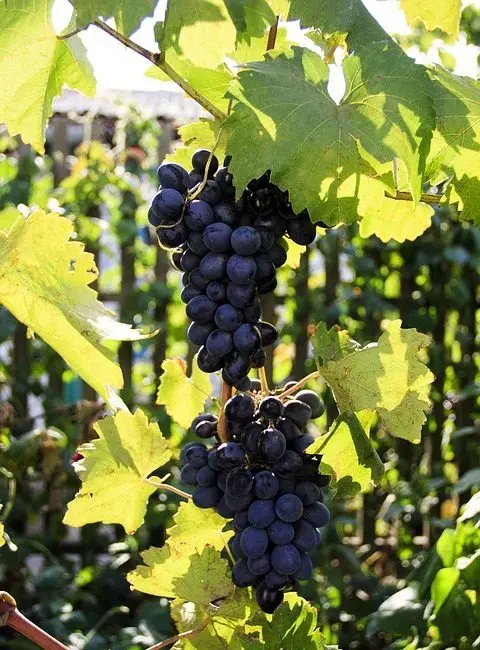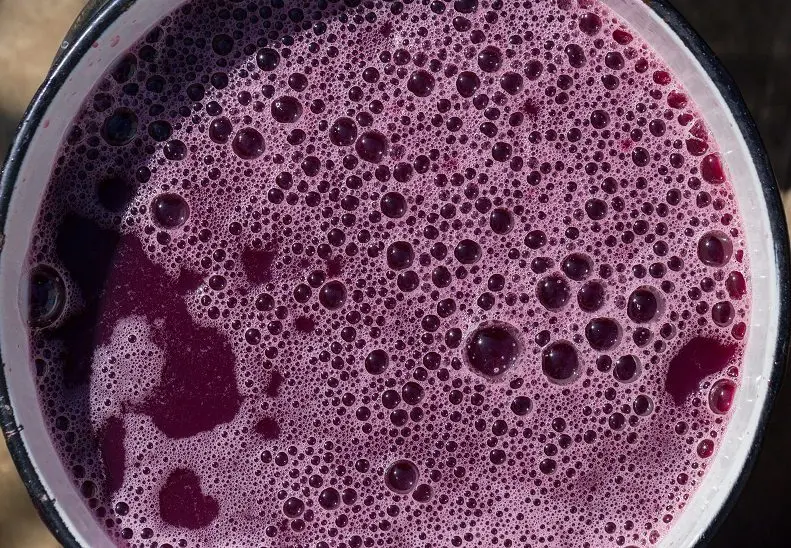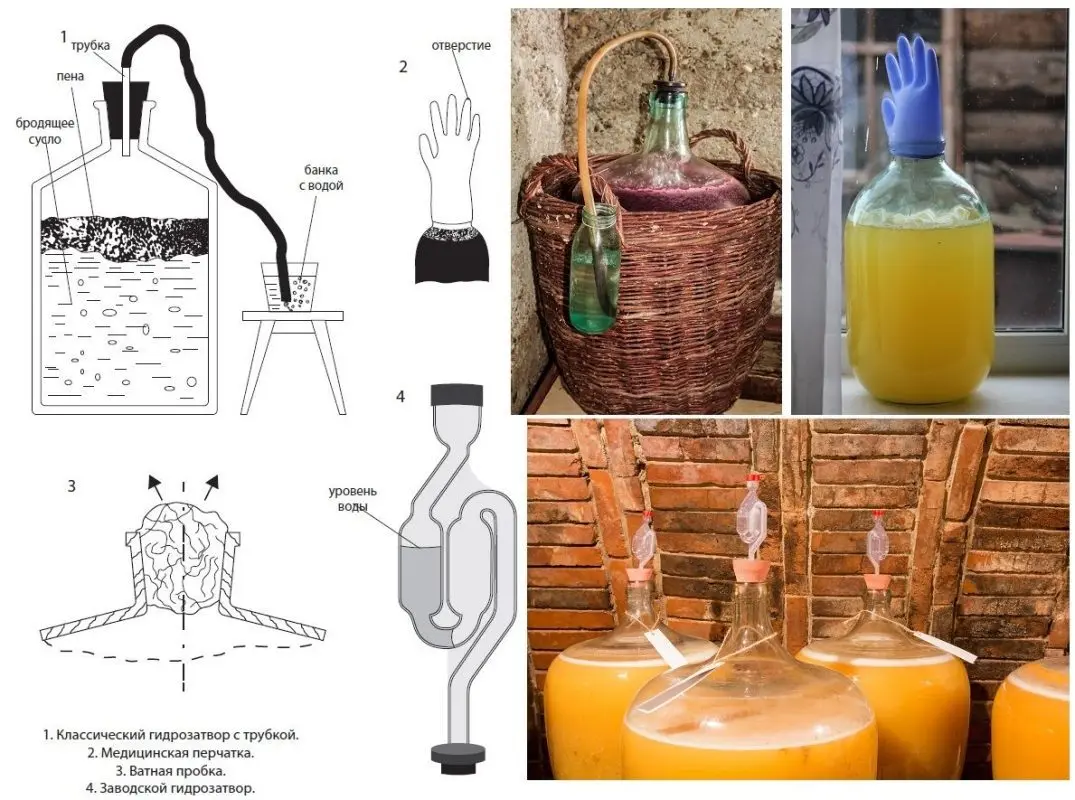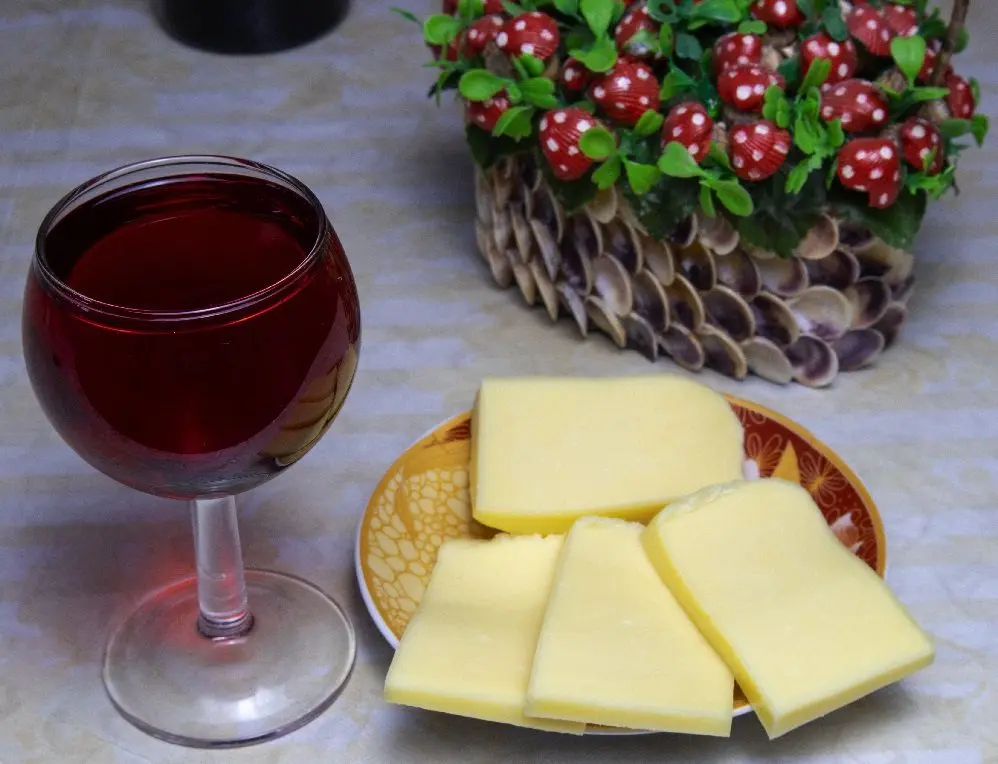Although Moldova grapes belong to table varieties (intended for eating and getting juice, technical varieties are used in winemaking), good homemade wine can be made from it, it is only important to adhere to the technology. Wine from Moldova is red in color, with a rich aroma and taste. At the same time, the sweetness of the drink can be adjusted at your discretion with beet sugar, fructose or dextrose.
Theory
The Moldova grape variety was bred in the 70s of the XX century at the Moldovan Research Institute of Viticulture and Winemaking. First of all, this variety is valued for its high yield (120-150 kg / ha) and good storage (with proper care, the berries can lie all winter). The disadvantage is late ripening, so the distribution area is limited to the southern regions, in other climates the berries often do not have time to ripen before frost.
Moldovan grapes are officially recommended for cultivation in the following regions of Russia: Dagestan, Kabardino-Balkaria, Krasnodar Territory, Adygea, Stavropol Territory, Karachay-Cherkessia, Crimea, Volgograd, Astrakhan, Saratov, Rostov regions and Kalmykia.

The sugar content of Moldovan grape juice is 17-19%, the acidity is 8,0-8,5 g/l. This means that the variety is well suited for making dry wine with a strength of 9-11% vol. without adjustment of sugar content and acidity. To obtain semi-dry, semi-sweet and sweet wine, you will need to add a sweetener: sugar, fructose or dextrose.
The amount of sugar depends on the desired type of wine in terms of strength and sweetness. 1% fermented sugar gives about 0,6% strength, but it is important to remember that at an alcohol concentration above 11-14% vol. most yeast stop working, so during fermentation, the sugar content of the juice should not exceed 20-24%. After the end of fermentation, the wine can be sweetened to taste and put on aging.
In most cases, wine is sweetened with beet sugar, but to avoid the characteristic taste of sugar, it is better to use dextrose or fructose (optimal) if possible, adding these substances in the same proportions as sugar.
To start fermentation, you can use “wild” yeast that is on the surface of the fruit, store-bought wine yeast for red grape varieties, or make a starter for wine a few days before processing the raw materials. For stable fermentation and obtaining a fortress of 12-14% vol. I recommend taking wine yeast, if not, prepare a sourdough. Wild yeast can be the most problematic because it is often washed off the skins of berries by rain, starts fermentation poorly, and some strains stop at 9% ABV. It is impossible to add alcohol or baker’s yeast, otherwise fruit mash will turn out instead of wine.
To avoid contamination of wine with mold and other pathogenic microorganisms, you can work with the must only with well-washed hands, and all used items and containers should be sterilized with boiling water, then wiped dry with a clean, dry cloth.
Wine recipe from Moldova
Ingredients:
- grapes Moldova – 10 kg;
- sugar – up to 250 grams per 1 liter of juice (optional);
- water – up to 100 ml per 1 liter of juice (required in exceptional cases, it is advisable not to add);
- wine yeast or sourdough – for 7-8 liters of must.
Technology of preparation
1. If “wild” yeast is used, the crop must be harvested in warm, dry weather (it has not rained for 2-3 days), so that fungi remain on the surface of the berries, which will start fermentation. In the case of store-bought wine yeast and sourdough, the grapes can be harvested at any time and washed.
2. Sort out the raw materials, removing twigs, leaves, spoiled, rotten and moldy berries. Even one bad berry can ruin an entire batch of wine.
3. Mash the berries with your hands or a wooden rolling pin. It is important not to crush the bones, otherwise the finished wine will be bitter.
4. Pour the resulting mass into a non-metallic or enameled container with a wide neck – a bucket or pan. If possible, add sourdough or wine yeast (according to package instructions). Stir, cover with gauze to protect against insects, then transfer to a dark room with a temperature of 18-27 ° C. Leave for 4 days.
5. Every 8-12 hours, mix the must with your hand or a wooden stick, drowning the pulp (surfaced particles of skin and pulp) in fermenting juice to prevent sourness and moldiness.

On the first day, signs of fermentation should appear: foam, hiss and a slight sour smell, which means that the process is going well.
6. After 4 days, strain the wort through several layers of gauze, squeeze the pulp dry. Taste the juice.
If the grapes are not fully ripe and the juice is very sour: it stings the tongue and reduces the cheekbones, it should be diluted with water, adding a maximum of 100 ml of water per 1 liter of juice (preferably less). The more water added, the worse the wine will turn out, but too high acidity spoils the taste.
7. If possible, measure the sugar content of the juice with a hydrometer or refractometer. You can additionally sweeten the wort up to 22-24%, focusing on the final strength of the drink 12-14% vol.
8. Pour the juice into a fermentation tank, fill up to a maximum of 75% of the volume to leave room for foam and carbon dioxide. Install a water seal of any design (see photo).

9. Transfer the future wine from Moldova to a dark room (cover with a thick cloth) with a stable temperature of 20-28 °C. Leave until the end of fermentation.
Depending on yeast, temperature and sugar concentration, wine from Moldova grapes ferments 35-50 days. The end of the process is indicated by the absence of gas from the water seal (deflated glove), a layer of loose sediment at the bottom and a significant clarification of the wort, and the foam at the surface also disappears.
Attention! If the wine has been fermenting for more than 50 days since the installation of the water seal, in order to avoid the appearance of bitterness, it should be drained from the sediment and put back to ferment under the water seal at the same temperature.
10. Carefully drain the young wine into another container through a straw, trying not to touch the sediment at the bottom. Taste the drink, sweeten with sugar if desired.
After fermentation, a dry wine should be obtained (possible residual sugar up to 1%). Amount of sugar (fructose, dextrose for different types of wine):
- semi-dry – up to 30 g / l;
- semi-sweet – up to 80 g / l;
- sweet – 140-220 g / l.
Separately, the wine can be fixed with vodka, alcohol or grape moonshine in the amount of 2-10% of the volume of wine. Fortified wines keep better, but are tougher in taste.
11. Pour the drink into holding containers, being careful to fill up to the very neck to avoid contact with air. Close hermetically.
If a sweetener was introduced at the previous stage, keep the wine under a water seal for the first 7-10 days of aging in case of repeated fermentation.
12. Transfer wine from Moldova for aging in a cellar or refrigerator with a temperature of 5-16 °C. Leave at least 4-5 months (better 6-8) for maturation. Exposure improves the taste – notes of mash and sharpness go away.
13. When a sediment appears in a layer of 2-4 cm, filter the wine by pouring it through a tube into another container. At first, filtration will be needed every 10-15 days, then less often.
14. Wine from Moldova grapes is considered ready when significant sediment ceases to fall. The drink can be bottled for storage and hermetically sealed.
Shelf life if stored in a refrigerator or basement – up to 5 years. Fortress – 10-14% vol.











Krym to Ukraina!